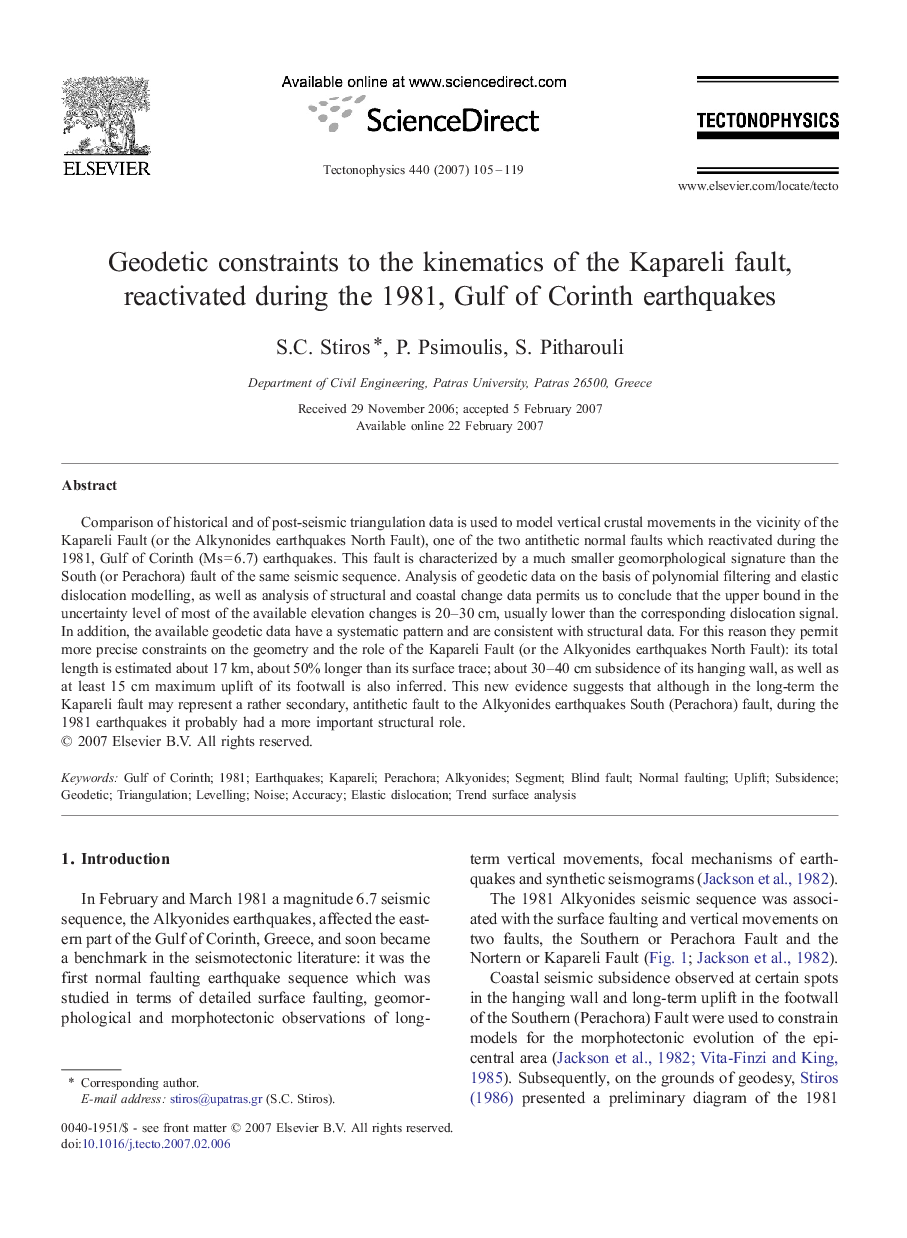| Article ID | Journal | Published Year | Pages | File Type |
|---|---|---|---|---|
| 4694636 | Tectonophysics | 2007 | 15 Pages |
Comparison of historical and of post-seismic triangulation data is used to model vertical crustal movements in the vicinity of the Kapareli Fault (or the Alkynonides earthquakes North Fault), one of the two antithetic normal faults which reactivated during the 1981, Gulf of Corinth (Ms = 6.7) earthquakes. This fault is characterized by a much smaller geomorphological signature than the South (or Perachora) fault of the same seismic sequence. Analysis of geodetic data on the basis of polynomial filtering and elastic dislocation modelling, as well as analysis of structural and coastal change data permits us to conclude that the upper bound in the uncertainty level of most of the available elevation changes is 20–30 cm, usually lower than the corresponding dislocation signal. In addition, the available geodetic data have a systematic pattern and are consistent with structural data. For this reason they permit more precise constraints on the geometry and the role of the Kapareli Fault (or the Alkyonides earthquakes North Fault): its total length is estimated about 17 km, about 50% longer than its surface trace; about 30–40 cm subsidence of its hanging wall, as well as at least 15 cm maximum uplift of its footwall is also inferred. This new evidence suggests that although in the long-term the Kapareli fault may represent a rather secondary, antithetic fault to the Alkyonides earthquakes South (Perachora) fault, during the 1981 earthquakes it probably had a more important structural role.
